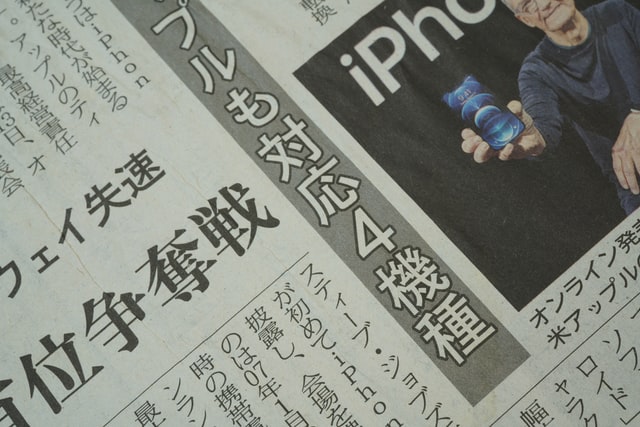- Resource Center
- Professional Development
- Articles & Videos
- Word Count for Japanese for Project Managers
13 June 2022
| by 1-StopAsia
Word Count for Japanese for Project Managers

Sign up here for our newsletter on globalization and localization matters.
For three years in the translation industry, I learned a trick or two on the peculiarities of working with Asian languages. Sometimes my quest for searching interesting and professional topics leads me in very curious directions but a few months ago, when we did a webinar on Asian languages translation with GALA, I noticed something else. Because it is part of our daily work routine, I didn’t even notice that some of the most “usual” topics for us, might be a potential point of interest or something that our colleagues from other companies are curious to know more about. Two more webinars later with topics concerning Asian languages and I decided to pick up the “generic” topic of “Word Count for Japanese for Project Managers”. Why?…
Because people ask, it is industry-specific, it is useful and yes…it is about Japanese!
So, What’s The Hassle With Word Count for Japanese?
Now let me tell you something I have learned so far…
”If you want to know what can go wrong in a translation project, take Japanese and try to go through all the professional stages of a translation project yourself.”
Starting with the writing system, going through the cultural differences, then the specifics on working with CAT tools and choosing the right linguists, you name it – you’ll have it! However, we are not here to discuss the specifics of the language. We want to outline some practical advice for PMs on Japanese word count and what to have in mind when processing such translations.
Writing System Specifics Affecting Word Count for Japanese
The first thing we need to point out here is that because of the way Japanese is written there are a number of ways to go about word count. If we have a project from English (or any other Latin-based language) into Japanese it is a no-brainer – we use source language word count. It is easy, straightforward and CAT tools have no issues with it.
The tricky part comes when we have to do the opposite and prepare a quotation from Japanese to English (or another language).
Most translation companies have an approximate ratio for how much a language contracts or expands but this is useful only to provide an estimate for budgeting purposes. Reaching the point where you have to take a project you need to have a clear understanding with your client how much it will cost.
The options available are two: use target language word count or use source language character count. However, both have specifics you must be aware of as follows:
Target Language Word Count
Target language word count means we approximately predict how many words will be the target language. For your client that translates into an unclear amount of money until the translation is complete. That is a position not many customers would like to be in, right? What we’d recommend is using source language characters for the quotation.
Source Language Character Count
Source language character count might sound complicated but in reality, despite the exotic sound, it will give you exactly what your customers want – a clear estimate on how much they need to pay. The only thing you should do is just explain to your client why we count the characters instead of words.
Are CAT Tools Reliable for Japanese?
As with the word count, there is no simple answer here. The truth is if you know how to navigate the particulars of a language, then almost any CAT tool can do the job. Some better, some with a bit more additional work but CAT tools are useful not only for the quotation part but also at later stages.
To get a better understanding of what our Production team thinks about these, I went to one of my most trusted resources on the matter – Rosen Ivanov, Account Manager at our EU office. I simply asked him about his experience with Japanese for PMs, which is quite extensive.
As we work with almost any CAT tool on the market due to the specifics of our business, I must say we don’t show preferences to one or another as usually, our clients request from us which one to use. There are some things you need to look out for, however, and I’ll point out only a few in the next paragraph along with some other tips on what affects the word/character count.
Things to Watch Out for
There are two aspects here that we will talk about: linguistics and CAT tool highlights. I’ll start with the linguistics part affecting the volume of a project.
- Consider the topic when doing an approximate estimation – the more modern and contemporary topics like IT, computer sciences, and others of the kind include more Katakana characters and sometimes this affects the volume of the text.
- The ratio you’ll find online varies slightly between 2:1 or 2.5:1 (characters to words) and this has to do with the above point we made.
- When choosing a CAT tool look at its settings and what does it actually count.
- Pay attention to “hidden” formatting like spaces or “enter” keys which may affect the segmentation of the text.
- Stipulate which content is translatable and which not – pictures, stamps, and other similar details.
- Don’t use Microsoft Word except if you have the proper version of it. There are differences in line braking, punctuation marks, and others that might mislead you sometimes.
- Quote your client the same way you will pay your translator or vendor partner and provide a transparent and easy-to-understand quotation.
The Road to Learning is Asking More Questions
Sometimes the simplest advice makes things easier for us and other times it raises more questions. I realize that articles are only scratching the surface on how to go about Japanese translation and word/character count. One thing that I can point out here is that we love to help and usually a well-posed question is what I would love to receive after you read this article. Technology is advancing very fast but in some of the Asian languages, it is lagging behind due to their complexity. Japanese is no exception to this trend but this is where we come in and you don’t need a project to ask us a question about quoting Japanese or how to perform the word/character count for it.
PS: Special credits to my colleague and Ace – Account Manager Rosen Ivanov. I couldn’t have done it without you!
Do you want to contribute with an article, a blog post or a webinar?
We’re always on the lookout for informative, useful and well-researched content relative to our industry.



